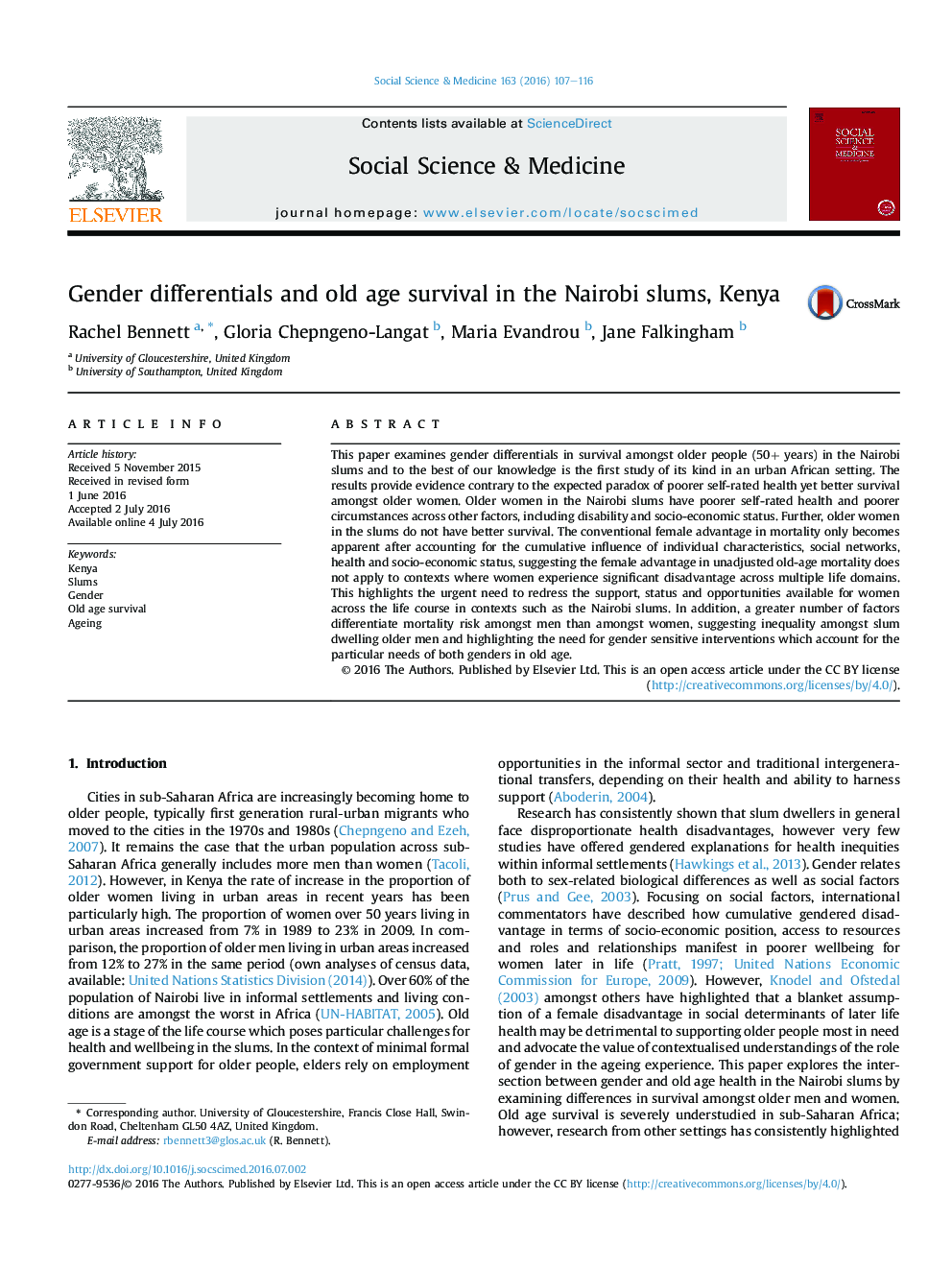| Article ID | Journal | Published Year | Pages | File Type |
|---|---|---|---|---|
| 7329648 | Social Science & Medicine | 2016 | 10 Pages |
Abstract
This paper examines gender differentials in survival amongst older people (50+Â years) in the Nairobi slums and to the best of our knowledge is the first study of its kind in an urban African setting. The results provide evidence contrary to the expected paradox of poorer self-rated health yet better survival amongst older women. Older women in the Nairobi slums have poorer self-rated health and poorer circumstances across other factors, including disability and socio-economic status. Further, older women in the slums do not have better survival. The conventional female advantage in mortality only becomes apparent after accounting for the cumulative influence of individual characteristics, social networks, health and socio-economic status, suggesting the female advantage in unadjusted old-age mortality does not apply to contexts where women experience significant disadvantage across multiple life domains. This highlights the urgent need to redress the support, status and opportunities available for women across the life course in contexts such as the Nairobi slums. In addition, a greater number of factors differentiate mortality risk amongst men than amongst women, suggesting inequality amongst slum dwelling older men and highlighting the need for gender sensitive interventions which account for the particular needs of both genders in old age.
Related Topics
Health Sciences
Medicine and Dentistry
Public Health and Health Policy
Authors
Rachel Bennett, Gloria Chepngeno-Langat, Maria Evandrou, Jane Falkingham,
